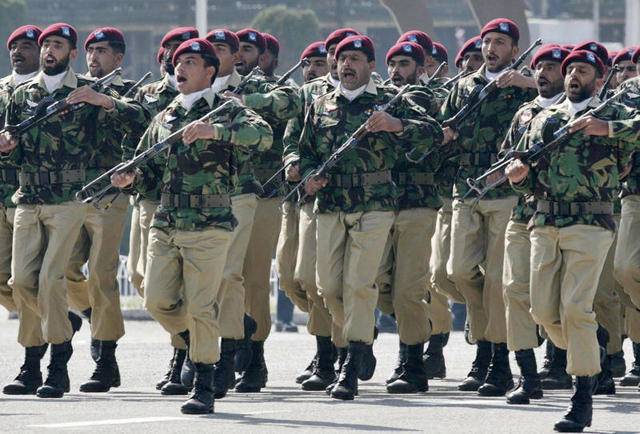The United States, France and Russia, supply weapons and arms to both india and Pakistan according to the Stockholm International Peace Research Institute. Data reveals that Pakistan and India are among the top 10 weapons' importers in the world. Turkey, Serbia, China and Jordan supply weapons solely to Pakistan and not India. Canada, Spain, United Kingdom, Netherlands, Germany, Poland, Israel, Kyrgyzstan and South Korea only provide weapons to India and not Pakistan. One of the things in play is that India sees China as a rival, and a lot of its purchasing is to compete with China. This probably plays into why countries like UK and Germany are only supplying to India, as Pakistan is not the only danger in the region. Pakistan is now the world’s leading purchaser of Chinese weapons.
However, just looking at the arms' race between India and Pakistan, one can conclude that deterrence has been an expensive policy. The massive spending of both countries is a sobering depiction of high-octane missile development programs and lethargic diplomacy. Indian and Pakistani pledges were to pursue minimum credible deterrence made by government leaders after testing nuclear devices in 1998 has been a sham. The hope was that going public with nuclear capabilities would have stabilizing effects by relieving anxieties and facilitating diplomatic efforts to normalize relations. It did the opposite. Optimists have discounted domestic political and institutional drivers pushing for more bombs and better ways to deliver them. It is a false premise that a sense of normalcy can be midwifed by devices with horrific destructive powers. The number of tangible diplomatic accomplishments since 1998 has been paltry. We have to move beyond doctrines of deterrence.
The overall lack of progress on arms' reduction, as well as apathy and occasionally escalating tensions in the Russia-US dialogue on missile defense and nuclear disarmament, plays havoc with the politics between Pakistan and India as they have no will to jointly influence New Delhi’s and Islamabad’s policies on nuclear arms. Ballistic missiles are developed in a zig-zag fashion. Pakistan and India could choose to use the 1987 Intermediate Range Nuclear Forces Treaty (INF) between the Soviet Union and the United States as a model for their strategic relations and set an equal upper limit for the number of certain types of missiles (if the respective militaries can find it in their egos to do this). We legitimize arms as tools for our survival when they are for our destruction. But when India is importing nearly three times as many weapons as China, what exactly is treaty-less and insecure Pakistan to do?
Friday, April 19, 2024
Minimum Incredible Deterrence

Germany head coach Julian Nagelsmann extends contract till 2026 World Cup
9:00 PM | April 19, 2024
IMF urges Italy, France to spend less, Germany to loosen purse strings
8:57 PM | April 19, 2024
PM calls UAE president, admires Emirati leadership's response to recent Dubai rains
8:55 PM | April 19, 2024
Church leader calls for including Christians in Gandhara Corridor
8:50 PM | April 19, 2024
Empowering Women: The Vision of Maryam Nawaz Sharif
8:37 PM | April 19, 2024
A Tense Neighbourhood
April 19, 2024
Dubai Underwater
April 19, 2024
X Debate Continues
April 19, 2024
Hepatitis Challenge
April 18, 2024
IMF Predictions
April 18, 2024
Kite tragedy
April 19, 2024
Discipline dilemma
April 19, 2024
Urgent plea
April 19, 2024
Justice denied
April 18, 2024
AI dilemmas unveiled
April 18, 2024
ePaper - Nawaiwaqt
Advertisement
Nawaiwaqt Group | Copyright © 2024





